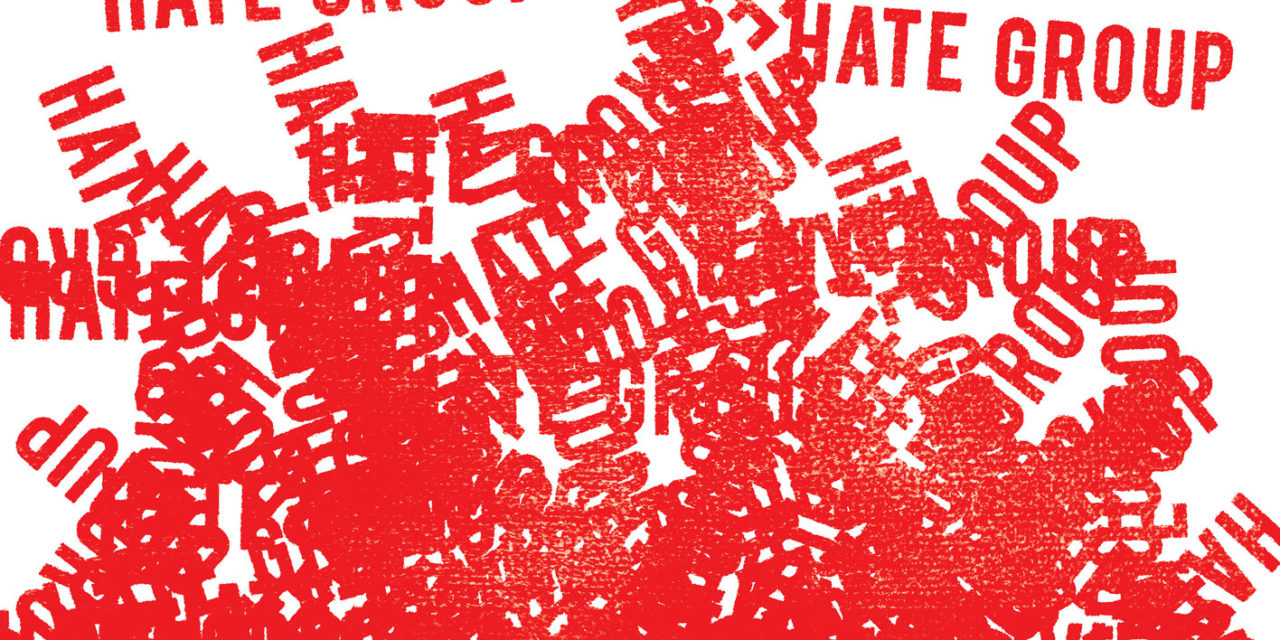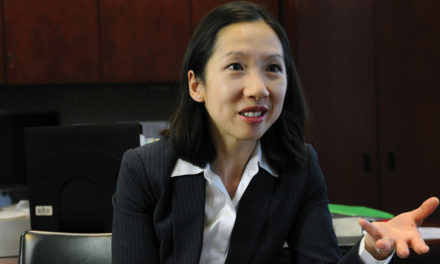“I can tell you I’ve been through hell.”
Carol Swain, Ph.D., doesn’t mince words when describing the past eight years of her life. Before retiring earlier this year, she spent more than a decade and a half as a professor of law and political science at Vanderbilt University in Nashville, Tenn. That came on the heels of 10 years as an associate professor of politics and public policy at Princeton University in New Jersey. She loved her students and the lively exchanges of ideas that often played out in her classrooms. It was a career that seemed to suit Swain perfectly.
But then it took a sour turn.
Swain—who is both black and politically conservative—was viewed by many at Vanderbilt as a contentious figure. In 2015, students called for her suspension after she said Islam poses a danger to the United States. Last year, she angered others by saying the Black Lives Matter movement is “destructive.” Worn down by the charged atmosphere for which she increasingly, if unwittingly, served as a lightning rod, Swain elected to retire early at age 53.
The “hell” she describes, however, actually began with a Huffington Post blog entry she authored in September 2009. In it, she called out the Montgomery, Ala.-based Southern Poverty Law Center (SPLC), a nonprofit watchdog group, for attacking then-CNN news anchor Lou Dobbs.
The SPLC, which historically worked through the legal system to bankrupt violent racist groups like neo-Nazis and the Ku Klux Klan, considered Dobbs to be overly focused on illegal immigration. Swain found it curious that writers on the SPLC’s Hatewatch blog had much to say against Dobbs, but remained silent about widely reported efforts by black men to intimidate white voters at a Philadelphia precinct in the 2008 presidential election.
“It made sense for [the SPLC] to write about the New Black Panther Party for patrolling a voting precinct with nightsticks and paramilitary gear,” Swain says. “It did not make sense for them to single out immigration restrictionists.”
In Swain’s opinion, the SPLC had drifted from the noble purposes for which it was formed in the early 1970s, and she said so. She titled the post “Mission Creep and the Southern Poverty Law Center’s Misguided Focus.” She ended it by writing, “Rather than monitoring hate groups, the Southern Poverty Law Center has become one.”
That impassioned entry, she believes, led the SPLC to turn its sights on her.
One month later, Swain found herself at the center of a firestorm. In a front-page story of her hometown newspaper, The Tennessean, SPLC spokesman Mark Potok accused Swain of being an apologist for white supremacists. His evidence? Her endorsement, two months earlier, of the film A Conversation about Race. Swain thought it offered a perspective on race that needed to be heard. The SPLC said the filmmaker, Craig Bodeker, was racist, citing his comments in various YouTube clips as proof.
The irony was rich. Swain has written two books alerting Americans to the challenges white nationalism could present to the vision of an integrated United States. When she wrote her film review, Swain was unaware of Bodeker’s YouTube comments. Upon learning of them, she immediately called them “ugly and vile,” and said anyone watching the film should be informed of Bodeker’s racially hostile background.
Still, the damage was done. The SPLC’s guilt-by-association charge marred Swain’s reputation, she says, in lasting ways. Black radio stations that once valued her opinions wrote her off as radioactive. Job recruiters stopped calling. Speaking offers dried up. The Tennessean thereafter routinely referred to her as “the controversial” Carol Swain.
Ultimately, the strain of having her character so badly maligned began to take a toll on Swain’s health. “In 2010, I ended up getting shingles in my face. I ended up having to be hospitalized for it,” she tells Citizen. “That’s a condition caused by stress. [Often] I felt like someone had punched me in the gut with their fist. I felt terribly alone and frightened.”
Swain, who grew up poor among 11 siblings in a two-room shack with no running water, was well-acquainted with how cruel life could be for African Americans. The idea that she would come to the aid of white supremacists was so ridiculous, The Wall Street Journal ran an editorial entitled “In Defense of Carol Swain” on October 26, 2009. That gave her a small glimmer of hope that perhaps the SPLC wouldn’t have the final word on how the public saw her.
“I would say that was the beginning of the backlash against the Southern Poverty Law Center,” she tells Citizen now. “The people who had been attacked before, you know, they were white. They were conservative. No one was paying that much attention when they complained they shouldn’t have been targeted.
“But when they targeted me—a black woman who had published two books on white nationalism—that, I think, really highlighted for a lot of people that this organization’s just gone off the rails.”
Compelling Cause, Charismatic Leader
By virtually all accounts, the SPLC was founded to do—and did—much-needed work to help solidify the civil-rights gains of the 1960s. Attorneys Morris Dees and Joe Levin founded the group in Montgomery in 1971; Dees remains on staff to this day. He is the SPLC’s best-known leader, the person most responsible for shaping its mission and vision.
Now in his early 80s, Dees grew up on an Alabama family farm, then went on to earn his law degree from the University of Alabama in 1960. Only a few years into his practice, he evinced a particular talent for marketing via direct mail. He used that skill to get rich building a book-publishing business in the 1960s with Millard Fuller, who would later go on to found Habitat for Humanity.
Dees, already a tycoon by his mid-thirties, seemed unlikely to spend the rest of his life in nonprofit work. According to the SPLC website, though, his conscience was gnawing at him. Pained by the bigotry he had witnessed from his boyhood, Dees felt compelled to address it.
“I had made up my mind. I would sell the company as soon as possible and specialize in civil rights law,” he wrote. “All the things that had brought me to this point, all the pulls and tugs of my conscience, found a singular peace.”
Dees followed through and sold the publishing company, using the proceeds to help start the SPLC with Levin, who is still listed on its website as a board member emeritus. Dees recruited civil rights icon Julian Bond—an African American well-known as one of the most prominent leaders of the Student Nonviolent Coordinating Committee and also a Georgia state lawmaker since the mid-1960s—to serve as the organization’s first president.
The 1970s brought many landmark victories for the SPLC as it plunged into the work of standing up for oppressed minorities. After its lawyers successfully argued blacks were underrepresented in the Alabama Legislature, federal courts ordered a reapportionment that resulted in the election of more black lawmakers. Other accomplishments over the first 20 years included bankrupting white supremacist groups, exonerating black people wrongly accused or convicted of crimes like murder and rape, and raising conditions in Alabama prisons to constitutional standards. The SPLC also successfully prosecuted sex-discrimination cases for women in law enforcement and the military.
The SPLC had become the high-impact, precedent-setting civil rights stalwart its founders had envisioned, and Dees was the perfect point man—a capable, charismatic leader and litigator. His mastery of direct-mail marketing was arguably his most crucial contribution to the organization’s sustainability. Dees lent marketing help to the presidential campaigns of George McGovern and Jimmy Carter, which gave him pivotal access to lists of potential donors—many of whom the SPLC would later convert into actual donors through its own direct-mail efforts.
But despite its reputation as an admirable and trustworthy organization, fissures within the SPLC began to emerge in 1986. That year, the organization’s entire legal staff—minus Dees—quit. Employees were concerned that the SPLC was drifting away from its initial focus on traditional civil rights issues and devoting too many resources to battling conservative groups.
Rather than seeing the shakeup as a wake-up call for course correction, Dees and the SPLC leaders bore down on their new heading.
Expanding the ‘Hate Map’
The seeds of the SPLC’s mission creep may have been sown as far back as 1981, when the group created the “Klanwatch” campaign to monitor the activity of Ku Klux Klan remnants nationwide. News reports indicate Klanwatch played a large role in the legal staff’s mass exodus—not because they supported the Klan, but because of a sense that the SPLC was increasingly directing its energies to matters more likely to generate headlines and fundraising dollars than actually improve the lives of oppressed people.
In 1998, Klanwatch was renamed the Intelligence Project as it began monitoring other so-called “hate groups.” Since then, the list has only expanded—and just which organizations and individuals the SPLC considers to be “haters” has become a hotly debated topic.
Since 1990, the group has produced an annual census of domestic hate groups. By the SPLC’s reckoning, the number has doubled over the last two decades, from 457 in 1999 to 917 in 2016. The organization defines “hate groups” as those having “beliefs or practices that attack or malign an entire class of people, typically for their immutable characteristics.”
The Hate Map always generates headlines. Because of the credibility built up through its previous civil rights litigation, information-sharing partnership with the FBI and Oscar-winning “Teaching Tolerance” program for schools chronicling America’s civil rights struggle, the SPLC’s status as an authoritative resource on hate groups has often gone unquestioned by the media.
A growing chorus of voices, however, is beginning to question that practice. Many mainstream Christian and conservative organizations have been added in recent years as the SPLC has expanded its focus to include what it considers “anti-LGBT” (Lesbian, Gay, Bisexual, Transgender) organizations. According to the SPLC’s website, “These groups are not listed on the basis of opposition to same-sex marriage or the belief that the Bible describes homosexual activity as sinful. Anti-LGBT groups engage in crude name-calling and disseminate disparaging propaganda and falsehoods about this population, such as the claim that gay men molest children at vastly higher rates than straight men.”
What the SPLC considers “disparaging propaganda and falsehoods,” the organizations it targets believe to be facts proven by scientific research. Groups such as Alliance Defending Freedom (ADF), the Family Research Council (FRC) and D. James Kennedy Ministries have been added to the hate list for espousing their view, often citing research, that homosexuality is harmful to children and families; disagreement, the pro-family groups contend, is not “hate.” In early October, the SPLC bought a full-page ad in The Washington Post, blasting FRC as “bigoted”—and timing it to land just before the annual Values Voter Summit, a marquee event for FRC Action and other conservative groups. Newsweek covered the summit under a headline saying “Donald Trump to Speak at Hate Group’s Annual Event, A First For a President.” Not until the third paragraph was that statement qualified by naming the SPLC as the source of the “hate group” label.
Another group the SPLC has targeted for being anti-LGBT is the American College of Pediatricians (ACPeds).
“The ACPeds has never maligned anyone nor has it ever engaged in attacks against a group of people,” President Michelle Cretella tells Citizen. “The College has presented the evidence-based position that non-heterosexual lifestyles carry significant health risks and that children fare best when nurtured by their biological parents in a loving marriage. These scientific facts—and they are facts—run counter to the agenda of identity politics, and this is what the SPLC finds egregious.”
Inclusion on the same hate list as white nationalists, neo-Nazis and skinheads has brought crippling consequences for many of these law-abiding organizations. Most tragically, a gunman who shot up the lobby of FRC’s headquarters, wounding a security guard, in 2012 said the Hate Map was his motivation. Other groups, such as ACPeds, have been barred from participating in AmazonSmile, which donates portions of online shopping proceeds to nonprofits, because of the hate list.
Profiting From Hate
So why does it keep growing?
“When a charity’s payroll and expenses zoom upward, fundraising must do the same,” explains Scott Walter, president of the Capital Research Center (CRC), an investigative think tank based in Washington, D.C., “which puts pressure on a group like the SPLC to find more targets and to become ever more hysterical about the supposed dangers those targets pose.”
Walter isn’t the first to call the SPLC’s fundraising practices into question. Harper’s, far from a right-wing publication, did so as far back as 2000. But as the SPLC’s tracking of “hate groups” and “extremists” has mushroomed to include organizations described as anti-Muslim, Black Separatist, and Christian Identity, as well as individuals like U.S. Sen. Rand Paul, liberal Muslim Maajid Nawaz, and Housing and Urban Development Secretary Ben Carson—who was later removed from the list. Critical coverage has come from other mainstream media outlets like Politico and The Atlantic in recent months. Politico, in particular, pointed out that many question whether fundraising has become the SPLC’s main reason for existence.
“The organization has always tried to find ways to milk money out of the public by finding whatever threat they can most credibly promote,” journalist Ken Silverstein told the publication for a story this summer; he conducted the investigation of the SPLC’s marketing and financial practices for Harper’s in 2000.
It is, after all, a large operation to maintain. The SPLC’s Montgomery headquarters is a six-story, $15 million building. Thirty of its employees make six-figure salaries (including total compensation topping $400,000 apiece annually for Dees and current president Richard Cohen). And according to its tax records, the group spends many millions annually on employee compensation, fundraising and transfers to its $319 million endowment—far more than the $1.9 million it spends on litigating cases in the average year.
The SPLC claims it’s building the endowment for a day when direct-mail fundraising costs become prohibitive. The money—millions of which reportedly come from Hollywood celebrities like George Clooney and major companies like Apple—seems well-protected. More than half the organization’s endowment is sheltered in hedge funds, offshore partnerships and other investments. The SPLC also has disclosed having “financial interests” in tax havens like Bermuda, the Cayman Islands and the British Virgin Islands.
“A great deal of charities rely on direct mail for funding, but you’d be hard-pressed to find any other charity with a balance sheet like the SPLC’s,” says Walter. “I don’t believe any reputable authority in the nonprofit field would approve of what the SPLC has done.”
While the SPLC is technically a public charity, Walter tells Citizen, it operates more like a for-profit hedge fund: carefully selecting the investments most likely to bring maximum returns.
“My guess is that LGBT activism scored well in their direct-mail tests, so it was added to the emotional ‘hooks’ they use to harvest cash from gullible contributors,” he explains.
Walter wonders if that’s why the SPLC has yet to label certain violent left-wing movements as hate groups or extremists.
“[Conservatives] are supposedly dangerous haters, yet none of them have marched and chanted death threats, as Black Lives Matter has, or committed six-figure damage to university campuses when someone they disagreed with was scheduled to speak, as Antifa has,” he points out. “I guess some people’s ‘hate’ is more equal than others.”
A Rational Response
There’s no evidence to suggest the SPLC will change who makes its list of “haters” anytime soon. That’s disappointing to Walter, who considers much of the SPLC’s work to be admirable. He would like to see its leaders open a dialogue with mainstream conservative groups about reconsidering what lands an organization on the Hate Map.
“Sadly, I’ve never known the SPLC to do anything so reasonable, so aimed at lowering the temperature of a dispute, so—for lack of a better word—honest,” he says. “So I would say pray for a miracle.”
That may be what it takes. The organization has ramped up its efforts since Trump’s election.
“In the past two years, in part due to a presidential campaign that flirted heavily with extremist ideas, the hate group count has risen again,” the SPLC website claims.
Leaders of Christian nonprofits on the Hate Map are left with the difficult task of responding with grace while not letting the SPLC get away with distorting the public’s views of their organizations.
Focus on the Family President Jim Daly empathizes with the position in which other family group leaders find themselves.
“Respect goes both ways,” he says. “As Christians, we cannot demean our ideological opponents by labeling them, but neither should they denigrate us. It may not be popular in certain circles to hold to certain viewpoints, but we’re not moved by the tone or tenor of the times. Our behavior is informed and shaped by the timeless Gospel of Jesus Christ.”
At least one targeted group is now fighting back. In August, D. James Kennedy Ministries sued the SPLC in federal court, claiming its inclusion on the hate list was intended to hurt its reputation and fundraising. The ministry is also suing AmazonSmile and the charity-research site GuideStar for using the hate list to downgrade its rating. (GuideStar added the SPLC designations to its charity profiles this June, but removed the labels within weeks after the leaders of more than three dozen targeted groups, including FRC and ACPeds, sent a letter of protest.)
Other groups say being labeled as “haters,” while not something they welcome, has in some ways made them stronger.
For ACPeds, “Our stand against transgender ideology, which ramped up attacks from the Left, including from the SPLC, has been followed by an unprecedented growth in membership,” says Cretella. Her group grew from 342 members in September 2015 to 516 two years later.
Swain, the former Vanderbilt professor, says she has relied heavily on her church family to get through the last few years. She says God has blessed her with a broader platform for promoting her research and ideas in retirement than she had while she was teaching.
“I think what has happened enables me to reach more people than I would if I were just weighted to one campus,” says Swain, who has spoken to hundreds at recent college campus appearances this year, with more scheduled.
“Bullies like the Southern Poverty Law Center have done their best to destroy me and people like me—and yet I rise.”
For More Information:
To see the Southern Poverty Law Center’s most recent Hate Map and other lists, visit splcenter.org/hate-map. To read theCapital Research Center’s critique of the SPLC,visit http://bit.ly/2z0WQSs.
A History of Monitoring ‘Hate’
1969 Morris Dees sells direct-mail business for $6 million.
1971 Dees and Joe Levin co-found the Southern Poverty Law Center.
1970s-1980s SPLC creates strategy of using civil suits against white supremacist groups to bankrupt them and give their assets to victims of racial violence and discrimination.
1981 SPLC launches “Klanwatch” project.
1986 SPLC broadens mission to attack conservative groups; entire legal staff quits in protest.
1990 SPLC releases first annual census of “hate groups.”
Mid-1990s SPLC launches “Patriot” movement to track anti-government groups; reports net assets of $50 million.
1998: Rebrands “Klanwatch” as “The Intelligence Project.”
2000 Reports net assets of $120 million.
2001 Construction completed on $15 million headquarters in Montgomery, Ala.
2010 Adds “anti-LGBT” and “anti-Muslim”categories to hate map.
2012 Armed gunman attacks a pro-family organization’s headquarters, wounding a security guard, and tells police he was motivated by the SPLC’s information.
2013 SPLC reports net assets of $250 million.
2017 Reports net assets of $350 million.
Originally published in the December 2017 issue of Citizen magazine.






